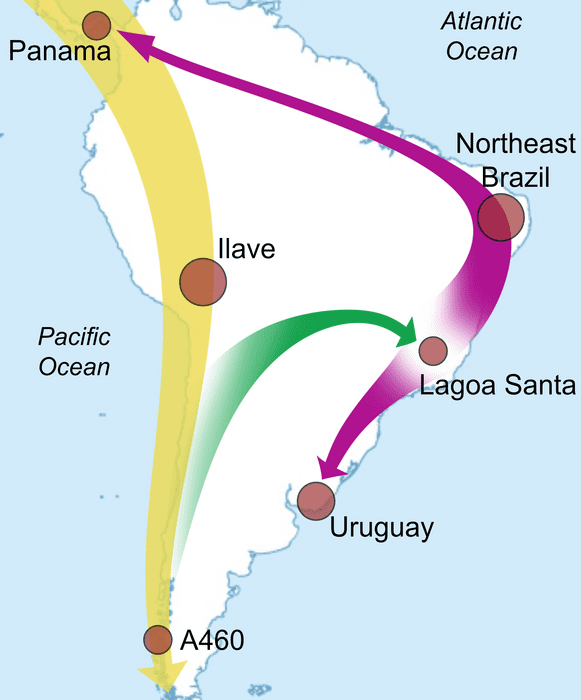The earliest humans to inhabit South America harbored genetic material from several extinct Eurasian hominid species, new research has revealed. In addition to carrying Neanderthal and Denisovan DNA, these ancient migrants also possessed genes from as far away as Australia and Papua New Guinea, all of which raises a number of intriguing questions about early human migration patterns.
“There is an entire Pacific Ocean between Australasia and the Americas, and we still don’t know how these ancestral genomic signals appeared in Central and South America without leaving traces in North America,” said study author Andre Luiz Campelo dos Santos in a statement.
Researchers analyzed the genomes of two ancient humans from northeast Brazil, each of whom lived around 1,000 years ago. By cross-referencing these against other early genomes from the Americas and modern worldwide genomic data, the study authors were able to shed light on how people first spread across South America.
For instance, results indicated a clear relationship between the two northeast Brazilian genomes and an individual who lived in southeast Brazil 9,000 years previously. These ancient settlers were also related to other long-dead individuals from as far away as Uruguay and Panama.
Based on these findings, the researchers suggest that the first people to arrive in South America migrated southwards along the Pacific coast. However, after reaching the southern portion of the continent, at least one group split from the main population and headed eastwards toward a place called Lagoa Santa, on the Atlantic coast of Brazil.
Based on the age of the oldest human remains in this region, the study authors conclude that “the split occurred at least 10,000 years ago.” After reaching Lagoa Santa, different groups began moving northwards and southwards, eventually creating an Atlantic migration route that connected Panama and Uruguay by about 1,000 years ago.
These findings therefore confirm for the first time that South America was initially peopled by a southward wave along the Pacific coast before a secondary wave moved northwards along the Atlantic coast.

Map showing the early migration patterns across South America, beginning with a southward wave along the Pacific Coast before moving eastward to Brazil, and finally north and south to Panama and Uruguay. Image credit: Florida Atlantic University
Fascinatingly, the researchers also found Denisovan and Neanderthal ancestry in the ancient inhabitants of both Panama and Uruguay. To their surprise, however, they noted a greater amount of Denisovan than Neanderthal DNA within these genomes.
The Denisovans are thought to have lived in Asia during the Paleolithic era, although very few physical remains belonging to this species of ancient human have ever been found.
“It’s phenomenal that Denisovan ancestry made it all the way to South America,” said study author John Lindo. “The admixture must have occurred a long time before, perhaps 40,000 years ago. The fact that the Denisovan lineage persisted and its genetic signal made it into an ancient individual from Uruguay that is only 1,500 years old suggests that it was a large admixture event between a population of humans and Denisovans.”
Though the Americas were the last continent to be inhabited by humans, little is known about how or when the first people arrived. And while the results of this study shed new light on the movement and ancestry of these early settlers, the insights provided suggest that the region’s genetic history may be more complex than we ever imagined.
The study has been accepted for publication in The Proceedings of the Royal Society B: Biological Sciences, and a preprint is available to view on bioRxiv.
Source Link: Neanderthal, Denisovan And Australasian DNA Found In Ancient South Americans